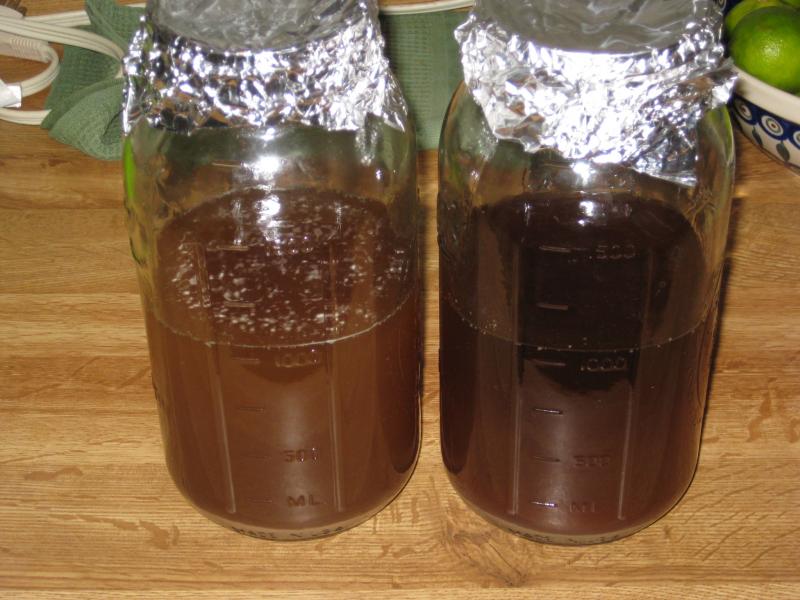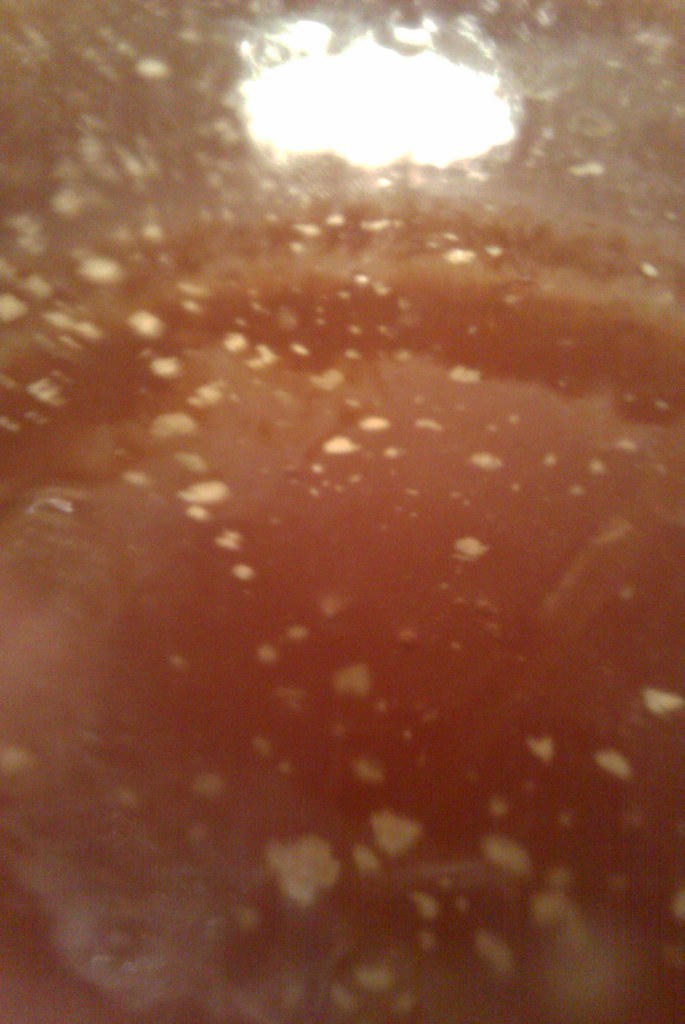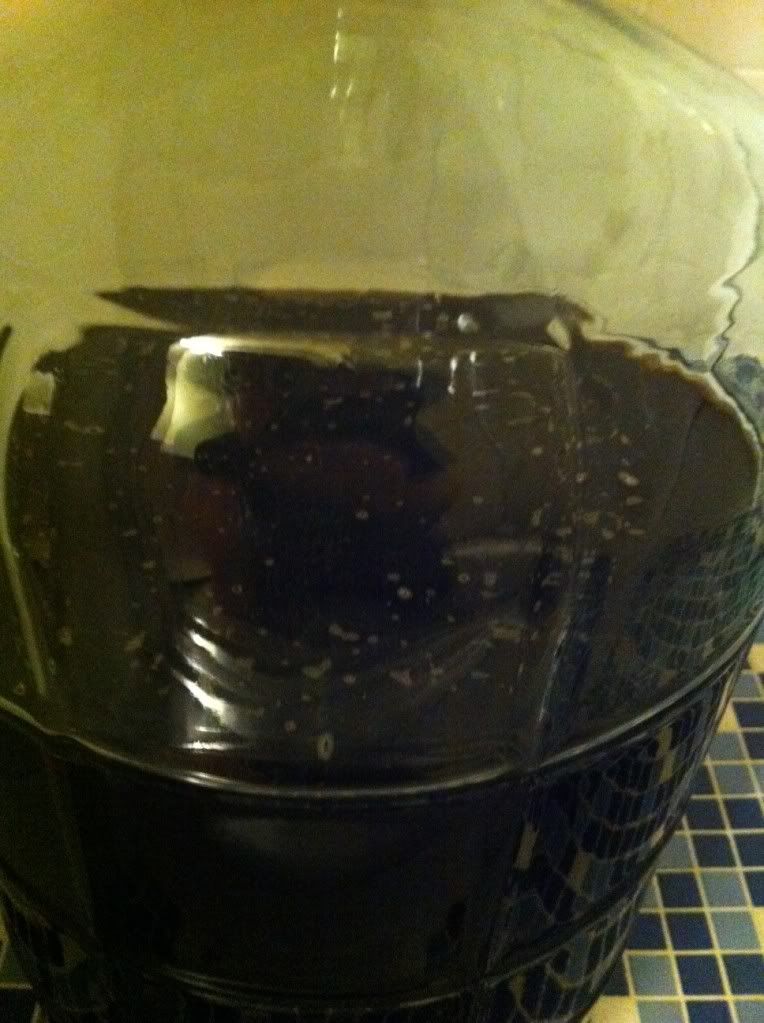I'm a little surprised by the reaction. Particulary since some of the longer brewers I woudl have though would know what I'm about to share, although perhaps they do and discounted it.
I made my comment about mold because the picture isn't clear enough for me (others with better vision or there in person are perfectly welcome to see yeast rafts, which is more probable). However, with respect to mold, and without having gone through lots of mold pictures, I refer to this byo magazine post
http://***********/stories/wizard/article/section/121-mr-wizard/1283-protein-rests-moldy-extract
specifically this paragraph
"Another reason to avoid using moldy malt or malt extract is that certain molds produce mycotoxins (toxins from mold) when they grow. Although many mycotoxins are completely destroyed when heated, some mycotoxins become more toxic when heated, as is the case with certain types of aflotoxin."
So IF it were mold then it could be toxic, which may get better with heating, or worse (isn't that easy). I admit that it refers to malt extract, not what is essentially wort, Which gets back to being able to see if it is furry or not, and what molds look like. For 6/pack of yeast vrs mold that may or may not be toxic? I'll spend $6, if I was pretty sure it was yeast rafts, I'd probably use it.
Thank you.
I'm not going to go into a whole screed about the sheer rarity of mycotoxic pathogins of any type in homebrewing, because we "experienced brewers" have already written in many threads about it already. We do perhaps know more about it than you do, and indeed HAVE discounted it. Or at least looked into the facts more than just surfacely.
Go read the information
here.,
or here as well, if you want to go beyond the fearmongering into actual truth.
We have put plenty of information all over here countering it.
This is one thing discussing mycotoxins,
Hoosbrewing said:
OK, so given my line of work I have access to Medline, which is a database of most scientific and medical journals published since 1955. A quick search for "beer" resulted in ~5000 journal articles. Another search of "pathogen" resulted ~53,000 articles, and a search of "infection" resulted ~600,000 articles. When I crossed beer with either or both of the other search terms, it gave me a total of 60 articles. Most of these were discussing risk factors for contracting HIV and/or hepatitis, or TB. A handful discussed infections in beer causing gushers, and there was the one study looking at levels of mycotoxins in beer. In that study, the levels reported were so low that they had to be verified by another testing apparatus, and there was no mention of what (if anything) the low levels would do to you if you drank them.
What I did not find, however, was any mention of any pathogen that causes harm found in beer.
Also Fusarium, the mycotoxin he's referring to, that you're so afraid of isn't a mold,
it's a fungus, it's discussed quite heavily in the thread I linked. And a lot of information out there is leading many of us to believe that it has pretty much been eradicated from the brewing grain crop anyway. Or at least heavily limited in the crop.
And it's something found on GRAIN, not extract, it wouldn't surviving the BOILING that goes into making the extract, and if on some rare instance it did, it wouldn't survive the NEXT BOILING, that of the starter wort, or the THIRD BOILING, that of the beer itself.
I will say that mold on the surface of the beer, means
nothing. It's quite common actually. Mold on the surface happens when the co2 barrier is breached and the surface of the beer may grow mold, where the beer or wort comes into contact with oxygen...just the surface, nothing below it is harmed.
It doesn't mean the beer's infected, it doesn't mean the beer's tainted, it doesn't mean the beer's poisonous, it doesn't even mean the beer is ruined.
Many of us have had mold on the surface and have simply carefully racked the beer away, leaving the mold and about an inch of the beer behind. And have gone on to keg and bottle the beer, and it's been perfectly.
I'll say it again, like we say on here constantly,
nothing pathogengenic can survive in beer.
So you can choose to take a little paragraph completely out of context and fear you beer, or you can understand the simple fact...NOTHING THAT CAN HARM YOU CAN EXIST IN BEER. It's really that simple.
And Pearson, the best thing for peace of mind, is the knowledge not ignorance, or half truths, or fear mongering. And there's plenty of knowledge about the ABSOLUTE safety of homebrewing around, especially on here.











